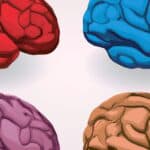Automatic Natural Language Processing (NLP ) is a fast-growing field in the world of technology and artificial intelligence. This is a set of techniques that enable a computer program to understand and interpret human language, as it is used on a daily basis. In this article, we’ll explore the different facets of TALN, its current applications and future potential.
Understanding automatic natural language processing
Before going into the details of NLP, it’s essential to understand what natural language means. Unlike computer languages, which are designed to be understood by machines, natural language is the language used by humans to communicate with each other. It is therefore complex, rich in nuance and subject to grammatical and syntactic rules that are sometimes unclear.
The aim of automatic natural language processing is therefore to enable a computer to process this complexity and derive meaning from the written texts or oral discourse produced by humans. To achieve this, several skills must be mastered by the computer:
- Text segmentation, which involves dividing a text into units of meaning, such as sentences and words.
- Morpho-syntactic analysis, to determine the grammatical function of words in a sentence (subject, verb, complement, etc.).
- Lexical disambiguation, which assigns each word its precise meaning according to context.
- Text generation, which involves producing a coherent, natural text from a basic structure or set of ideas.
The main techniques used in TALN
There are several approaches to automatic natural language processing. Among the most common are :
Rule-based methods
These methods rely on the application of predefined linguistic rules to analyze and process natural language. They generally require the creation of a dictionary of words and their properties, and the development of formal grammars to represent the syntax. While effective in some cases, they may be limited by the variability and richness of human language.
Statistical methods
Statistical methods are based on the analysis of large quantities of textual data to identify recurring patterns and structures. Based on this data, probabilistic models can be created to predict the structure and meaning of a text. This approach is particularly well suited to lexical disambiguation and machine translation.
Deep learning methods
Deep learning is a branch of artificial intelligence that draws inspiration from the workings of the human brain to create artificial neural networks capable of learning on their own. In NLP, these techniques have enabled major advances in text comprehension and generation, thanks in particular to models such as recurrent neural networks (RNN) and transformers.
Concrete applications of automatic natural language processing
TALN is at the heart of many of the technologies we use today, sometimes without even realizing it. Here are a few examples of applications:
- Voice assistants, such as Siri or Google Assistant, which use TALN to understand users’ voice commands and respond intelligently.
- Machine translation, with services such as Google Traduction or DeepL, which use NLP techniques to translate texts between different languages.
- Chatbots, conversational agents that interact with users via text or voice messages, are increasingly common on websites and mobile applications.
- Sentiment analysis, which extracts information about Internet users’ opinions from texts such as comments, tweets or online reviews.
- Automatic text editing, used for example to generate reports, summaries or press articles from a database or various sources of information.
The future potential of automatic natural language processing
The progress made in TALN in recent years is paving the way for many future innovations and applications. Among the avenues being considered are :
- More powerful personal assistants, capable of understanding the context and intentions of their users to provide even more personalized, tailored help.
- Improved accessibility to online content, thanks to increasingly effective text-to-speech and speech recognition tools for people with visual or hearing disabilities.
- Intelligent, automated customer support, with chatbots able to understand customers’ problems and requests and provide solutions quickly and efficiently.
In short, automatic natural language processing is an ever-evolving technology that promises to transform the way we interact with machines and benefit from advances in artificial intelligence. Its potential is immense, and continues to expand as researchers and engineers discover new methods and applications for making the most of human language.








